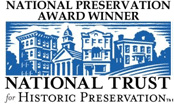Swampoodle Addition to Capitol Hill Historic District
Posted on March 13th, 2015
On March 13, 2015, the Society petitioned Gretchen Pfaehler, Chair of HPRB in support of the Swampoodle addition to the Capitol Hill Historic District (Case 15-01). Swampoodle Nomination HP Staff Report
Dear Chairwoman Pfaehler:
The Capitol Hill Restoration Society (CHRS) is very pleased to join ANC 6C and Council Member Charles Allen in support of the Swampoodle addition to the Capitol Hill Historic District.
One of the most serious threats to Washington, DC’s historic districts is erosion at the edges that threatens the integrity of contributing structures and creates a domino effect, especially severe in row house neighborhoods like ours. The northeast corner of the Capitol Hill Historic District is unargueably the most adversely affected portion within CHRS’s area of interest. Due to their proximity to Union Station and the intensively developing NoMa and H Street neighborhoods, the four undesignated squares that lie directly adjacent to the Historic District are increasingly threatened by incompatible “pop-ups” and outright demolition.
Not only are the historic resources within these largely intact squares worthy of protection, but the adverse effect of incompatible development at the adjacent Historic District boundary is troubling to CHRS. Great care must be taken to protect this neighborhood’s cohesive architectural character, both inside the current boundary and outside of it. These lines of designation run through the middle of streets. Fully-protected historic structures on one side of the street directly face vulnerable and undesignated buildings on the other side, buildings that share the exact same age, significance, and definitive qualities. In a rowhouse streetscape, just one demolition or one “pop up” can destroy the integrity of an entire row. CHRS has long supported historic district designation as the best mechanism to provide such protection.
It is also particularly important to note that this neighborhood has already witnessed and embraced a significant increase in density and additional housing. CHRS applauds the residents and the Advisory Neighborhood Commission for their years of work with developers to mitigate many of the adverse effects of large-scale development on the area’s historic fabric, and this proposal for designation is one of the byproducts of several years’ worth of amicable collaboration between developers and the community. Several developers and many residents agree that historic district designation not only stabilizes the remaining neighborhood, but also provides a model of how large-scale projects can be designed as good neighbors. At the same time, however, that development also places intense new pressures on the adjacent community that call for further protection to retain the historic character that made the neighborhood so desirable in the first place.
We believe it is critically important to preserve the unique character of the District of Columbia, and CHRS has long supported additional protection for our historic neighborhoods. These four squares are not only worthy of protection in their own right, but these protections would serve to reinforce the already designated properties along the exisiting boundary; all of which provide context to interpret the history and development of our nation’s capital, and the Union Station area in particular. The District of Columbia is far more than the seat of government and home to outstanding museums and monuments; it is also a city of neighborhoods. Designation of these squares provides an opportunity to demonstrate the important role of historic preservation in guiding neighborhood development, especially in areas where development pressures are at their greatest.
Sincerely,
Lisa Dale Jones, President
Capitol Hill Restoration Society
cc: Council Member Charles Allen
Karen Wirt, Chair, ANC 6C
Mark Eckenwiler, ANC 6C04


